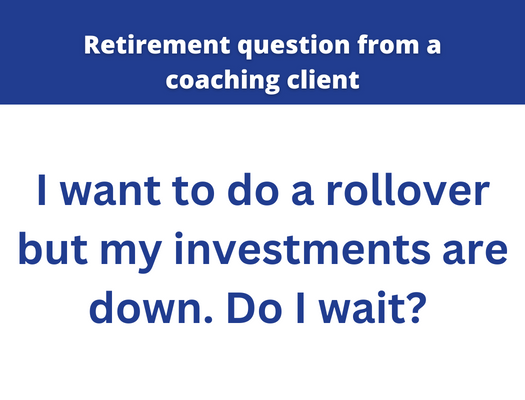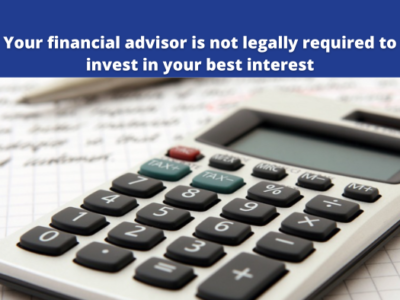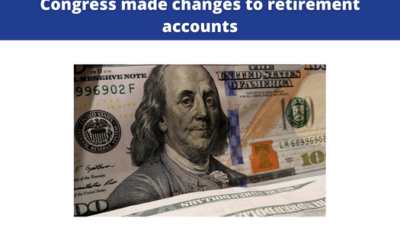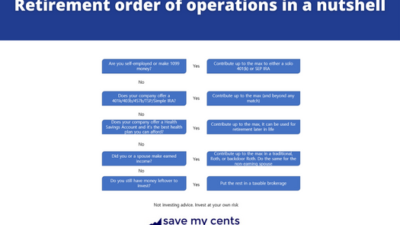Albert Einstein once said that compound interest is the eighth wonder of the world. Understanding how compound interest works is foundational to personal finance. Without understanding compound interest, it’s easy to make mistakes. Where do we see compound interest in personal finance? Credit card APRs. Saving account APY. Inflation. And Investing. Understanding the basic math behind this concept can help you make personal finance decisions that align with your goals. This post will show you how
What is compound interest and how do I calculate it?
In a nutshell: compound interest is growth on top of your base.
Compounding period: The amount of time during which the interest is applied. This time period is typically a year, though for debts, this is usually a month.
Interest rate: The % growth that is applied to your base, within the compounding period. Most interest rates are expressed as a % in a year. However, if you have something that compounds each month, then the interest rate is divided by 12, then applied towards the base.
The base is an amount of money you start with in the beginning of the compounding period. Your interest rate is then added as a percentage charged on the balance. The ending balance is the new balance after the compounding period and the interest rate has been applied. This becomes your new base, or beginning balance, for the next compounding period.
Example: You start with $1000, 5% interest rate compounded every year for 5 years. The way to calculate the interest for the first year will be $1000 x 1.05 = $1050. In year two, your new beginning balance will be $1050, so the ending balance is be $1050 x 1.05 = $1102.50.
| Years | Starting balance | Compound Interest being added | Ending balance |
| 1 | 1000.00 | 50.00 | 1050.00 |
| 2 | 1050.00 | 52.50 | 1102.50 |
| 3 | 1102.50 | 55.13 | 1157.63 |
| 4 | 1157.63 | 57.88 | 1215.51 |
| 5 | 1215.51 | 60.78 | 1276.28 |
As you can see, the total amount in this account increases over time. The compound interest being added also increases each year, because the starting balance gets bigger year after year. That is the compounding effect of compound interest, and that is what Albert Einstein was referring to in his quote.
A quick shortcut to see how much compound interest will impact your balance is to perform the following calculation using a calculator of your choice
Total = Initial Balance * (1+Interest Rate)^Years
For the same example, with a $1000 initial balance and 5% interest rate, if we wish to calculate the ending balance after 5 years, we would type in:
$1000 * (1.05) ^ 5 = $1276.28.
Another helpful tool for considering compound interest is the FV function in Microsoft Excel. This tool calculates the future value of an investment based on a constant interest rate.
=FV(rate, nper, pmt, [pv], [type])
Don’t fret – the formula is not that hard to fill in!
Rate = 0.05 in our example, the interest rate
NPER = the number of times it is compounding. In this case, we use an annual rate for 5 years, so NPER = 1.
PMT = not required in this example, but you can use it if you wish to add money to the balance
PV = the present value, or lump sum at the beginning of the investment, which will be $1000. Depending on how you enter the number, Excel might display a negative number. To switch to a positive number, enter -$1,000 for PV.
Compounding Interest in Debt Secured with Collateral
For debt that is secured with collateral and has an eventual due date on the total balance (called the loan term, and is usually expressed in months or years), the lender takes compound interest, applies it over the length of the debt, and then calculates how much you will pay in minimum payments to pay off debt and interest on time. This process is called amortization.
Debt secured with collateral is often a mortgage loan. Another common example of a loan that has a due date is a student loan. For these types of loans, as long as you pay them off on time that is all that matters. However, if you miss a payment, your principal grows by the interest you did not pay, and then this causes issues in personal finance.
Example: Someone makes payments on time
Let’s say in this example we start with a $100,000 loan, with a 5% annual interest rate compounded monthly, a loan term of 10 years. If someone makes payments on that loan each month, the balance would be $92,837.33 after one year, and after 2 years, the balance would be $85,308.21.
| Year | Beginning loan balance | 12 on time monthly payments | Ending balance |
| 1 | $100,000 | $12,727.85 | $92,092.56 |
| 2 | $92,092.5 | $12,727.85 | $83,780.50 |
Example: Someone misses one year of payments
However, if they missed the first year (12 months) of payments, the balance at the beginning of the second year would be $105,116.19. If this person then picked up their payments at the beginning of the second year, they would reach a balance of $98,215.28 after one year of payments (at the end of the second year), and $90,961.30 after the third year. By delaying the payments by one year, they are thousands of dollars behind where they could be if they started paying right away, because of the compounded interest.
| Year | Beginning loan balance | 12 monthly payments | Ending balance |
| 1 | $100,000 | $0 | $105,116.19 |
| 2 | $105,116.19 | $12,727.85 | $98,215.28 |
| 3 | $98,215.28 | $12,727.85 | $90,961.30 |
Compounding Interest in Unsecured Debt
Unsecured debt is a type of debt where there is no collateral and no fixed time period to pay off the debt. Some examples of this type of debt are credit cards and personal loans. Oftentimes, these types of debts have very high interest rates, because the lender does not hold any collateral, so they need to charge more interest rate in order to make up for the risk that they took to lend the debtor the money. While the credit card and personal loans also have a monthly payment requirement, oftentimes, this minimum payment is not enough to pay off the debt…. Ever! This then creates a serious debt issue where your debt balloons over time and you cycle into more debt to try to fix it. This is why credit card debt is one of the most toxic types of loans to have in personal finance, and should be avoided at all costs.
For example, let’s say that there is a credit card with a $10,000 balance. The card has a 20% annual interest rate that is compounded once per month. The card has a $100 minimum payment which is always paid on time. What will the balance be after 12 months of payments (a total of $1200 paid toward the $10,000 balance)?
The monthly interest being added is calculated as 0.2/12 (20% divided by 12 months) multiplied against the starting balance.
The balance after one year will be $10,878. This is over $800 more than the original balance on the debt, despite $1,200 already being paid toward that debt! This is why it is crucial that high interest rate loans be paid off as quickly and fully as possible, because the interest will be compounded on previous interest. And you also should run your own calculation on the debt to see if the minimum payment being charged is sufficient to be more than the interest being added, or whether you should be diligently paying more than the minimums.
Compounding Interest in Inflation
Unless you don’t watch the news, I’m sure you are aware that inflation has been making headlines for most of 2022. Inflation is what happens when a basket of goods – typically items that most people spend on – increase in price over time. Inflation almost always happens, it is something that you need to properly plan for in personal finance. The degree of inflation, however, varies over time. Inflation also contains a compounding effect, because the percentages are reported as a year-over-year figure, and the inflation is occurring from the existing price of a product, which was inflated previously.
You may have heard that current annual inflation is near 10%. So what does that mean? Let’s consider an 8-pack of triple roll paper towels, which now cost $25 at Target. If this rate of inflation were to stand, how much would these cost in 5 years? We can do the same compound interest calculation as the other examples to find out.
$25*(1.10)^5 = $40.26
If the rate of inflation on this item is 10% for the next 5 years, these paper towels will cost nearly $41 in 2027!
Compounding Interest in Investing
Although the examples of inflation and loan interest covered have shown that compounding can slow you down on the way to your financial goals, compound interest can also be used to your advantage in investing! Consider the US stock market, which has historically grown on average 10% per year since its inception (inclusive of dividend yields). This 10% return on investment rate can be used to forecast investments as well (although Save My Cents, to be conservative, typically forecasts using 5 – 7% instead). Let’s say for example, if you put $10,000 into the stock market today, and wanted to forecast 10% annual return on investment for the next 10 years, that $10,000 will be worth $25,937.42.
Again in formula form:
$10,000*(1.10)^10 = $25,937.42
In closing
The examples discussed here reveal the power of compounding interest, both in debt and in investing. If you understand compound interest, you can use it in your favor to invest and grow your wealth. If you do not understand compound interest, the growth on debt and inflation can easily turn your personal finance situation upside down into a very unpleasant situation where your income may not catch up to your expenses.










